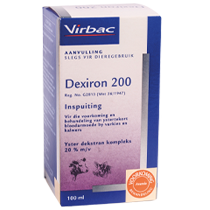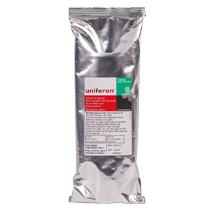
Understanding haemoglobin Levels in Piglets: Insight into anaemia and its Implications
As a young veterinarian entering the dynamic pig industry four years ago, I quickly realized the immense complexity of this field.
I continually asked myself “what sets pig production apart, making it so intriguing and competitive?”
I quickly realised that the knowledge and dedication of farm owners and managers was paramount. When farmers and managers actively engage with their consultants and they discuss peer-reviewed articles, it transforms the veterinary landscape.
Consequently, veterinarians must adapt and show agility to provide their clients and patients with the best scientific care and advice.
Early in my career, the animal health companies of Virbac and Pharmacosmos introduced me to the concept of anaemia in piglets through on-farm haemoglobin level measurements. What started as an exciting new on-farm diagnostic tool for both me and the farms, quickly evolved into an indispensable component of our diagnostic regime during on-farm consultations.
There's an old saying: "If you don't measure, you don't know." While this saying holds true, some veterinarians continue to rely solely on the clinical appearance of nursing piglets in the farrowing house, reasoning that "if the piglet is pale, it has anaemia." This approach, in many ways, may not be incorrect as we must use all our senses on farms to identify problems. However, incorporating additional diagnostic tools can significantly improve our diagnostic accuracy.
Piglet anaemia, also known as iron deficient anaemia, primarily affects young, rapidly growing piglets. Low iron levels in red blood cells result in reduced haemoglobin, which is responsible for transporting oxygen throughout the body. This article reflects my experiences working on pig farms and my personal perspective. Clinical signs of anaemic piglets range from pale piglets to weak pigs and poor growth. Older piglets can exhibit similar symptoms. They are more vulnerable to bacterial infections and less resistant to environmental chilling.
I often liken an anaemic piglet to an anaemic or iron-deficient human—pale and usually fatigued.
I often pose these questions to farmers:
-
if a piglet is tired and weak, do you think it can move quickly enough to avoid crushing when the sow is laying down?
-
Can these piglets reach the udder fast enough if milk letdown lasts only 20 seconds?
-
Can they access heat sources promptly to maintain their body temperature?
-
Can they mount an effective immune response when vaccinated?
The most frequently posed question is: “why are piglets anaemic if the sow is healthy and produces ample milk”? This is due to a blood: udder barrier, resulting in low levels of iron being present in colostrum and sow's milk (approximately 15% of daily requirements).
Piglets are also born with limited iron reserves, about 200 mg, which only lasts for five to seven days.
Piglets that are raised outdoors with access to soil, typically do not require additional iron supplementation. This may not however always be the case. Outside organic farming is not commonly practiced on a large scale. Modern infrastructure and biosecurity standards implemented in South African piggeries have swayed most producers towards intensive farming practices.
I wish to share a practical experience I was involved with.
During my first year as a pig vet consultant, I had the privilege of shadowing my mentor, Dr. Pieter Grimbeek. On one of our veterinary farm visits to a 1700-sow unit, the owner presented us with production data, which indicated issues such as weaning weights below 6 kg at 28 days of age and a pre-weaning mortality rate exceeding 15% due to lay-on/crushed and weak piglets between the ages of 4 days and 10 days old. We investigated multiple factors on the farm, including nutrition, management, and the environment. The piglet processing protocol on the farm included a 1ml (200mg) iron injection at day 3 of age, oral anticoccidial prevention at 6 days of age as well as mycoplasma and PCV2 vaccination at 21 days of age.
With the assistance of farm managers, we conducted an on-farm investigation using a HB photometer and microcuvette application for pen-side testing. We collected a droplet of blood from the ear for analysis in the following groups:
Gilts/Sows:
-
Ready to mate gilts at about 31 weeks of age.
-
Parity 1 sows:
-
A week before farrowing.
-
Three (3) days after farrowing.
-
Mid-lactation.
-
Prior to weaning.
-
-
Mid-gestation (Parity 2-6).
-
Sows (D1-D7) before farrowing (Parity 2-6).
-
Sows (D1-D3) after farrowing (Parity 2-6).
-
Sows (D4-D10) during the lactation period (Parity 2-6).
-
Sows (D25-D28) before weaning (Parity 2-6).
Piglets:
-
Parity 1 sows:
-
Day 1 - Day 3 of age (Before the 1st Iron injection).
-
Mid-lactation before creep feeding commenced, about 10 – 14 days old
-
Day 26-D28 of age (just before weaning).
-
-
Parity 2-6 sows:
-
Day 1 - Day 3 of age.
-
Day 4 - Day 10 of age before introducing creep feed.
-
D25-D28 of age before weaning.
-
We used the following criteria to classify the status of the sows and piglets:
Additional Notes:
-
None of the sows received additional iron supplementation.
-
The average values of groups of sows and piglets are reflected in the table.
-
No correlation was found between parities.
Summary of Results:
The investigation revealed that piglets were born with subclinical anaemia, and that by day 5, they had become clinically anaemic. However, after the introduction of creep feed at 10 days of age, there was a significant increase in haemoglobin levels.
As the consulting veterinarian on the farm, we implemented the following changes:
We administered 1 ml of iron supplementation (200 mg) on the first day of age and a second 1 ml iron supplementation (200 mg) on the sixth day of age based on the data obtained. The latter occurred simultaneously with the oral anticoccidial treatment.
By implementing these changes, a re-evaluation was conducted on the farm two cycles later, and the following results were noted:
-
Piglet results from day 4 to day 10 of age shifted from clinical anaemia to subclinical anaemia, effectively closing the iron gap.
-
There was an increase of 350g in weaning weight.
-
Pre-weaning mortality decreased by 2%.
Conclusion of the Investigation:
The heightened risk of haemoglobin deficiency-induced anaemia is attributed to several contributing factors:
-
Increased Litter Sizes: The trend of larger litter sizes results in diminished haemoglobin stores at birth, making piglets more susceptible to anaemia.
-
Accelerated Growth for Above-Average Birth Weight Piglets: Piglets born with above-average birth weights tend to experience faster growth, depleting their available haemoglobin stores more quickly.
-
Sow's Milk Haemoglobin Levels: The sow's milk, which is already low in iron, is further diluted in its iron content with the increase in litter sizes, exacerbating the risk of anaemia in piglets.
On this farm, it became evident that altering the iron supplementation regimen effectively mitigated the risk of anaemia and its economic impact. The return on investment for introducing the second iron injection is clearly demonstrated.


